
[1/x] Happy to announce the publication of “RETROFIT DECARBONIZATION of COAL POWER” (open access bit.ly/38NihtV, @energies_mdpi). A riveting 39-page article (+ 44p S.I.), obviously makes for excellent holiday/wknd reading :) Here's an attempt at a tweet-summary-thread! 
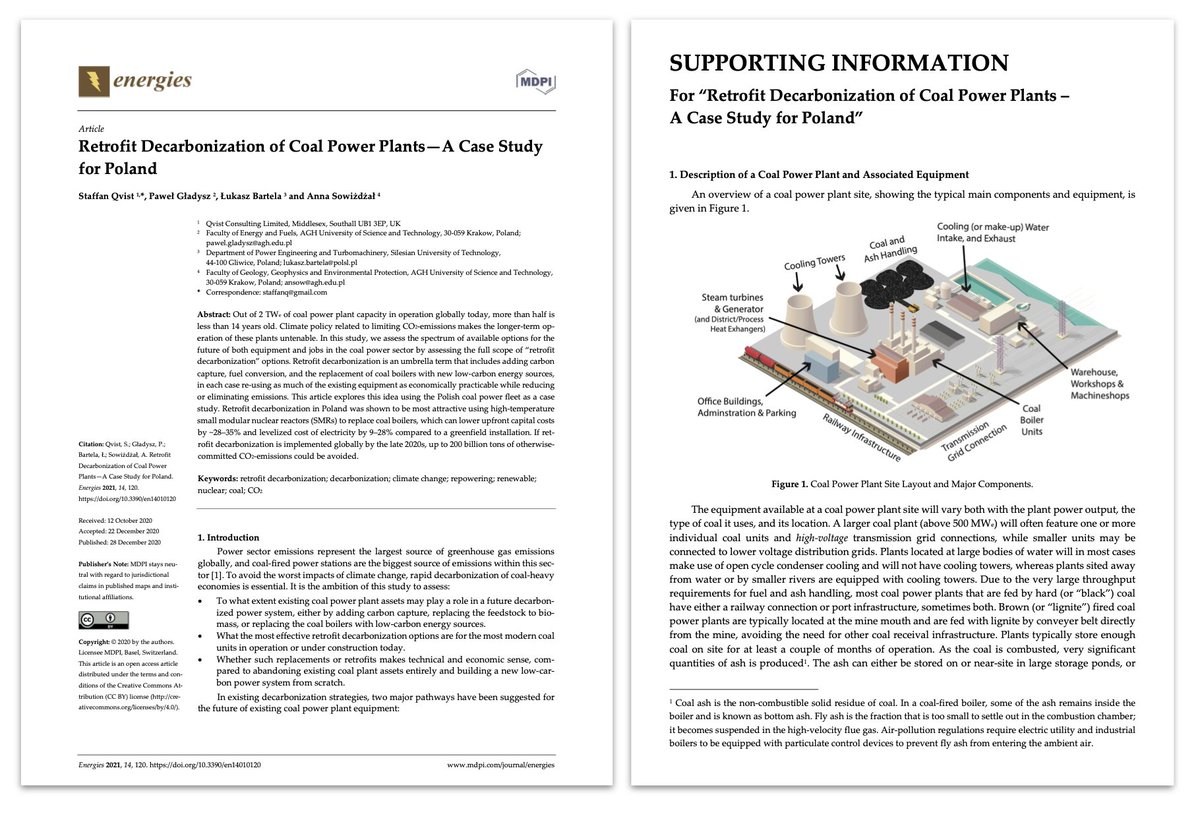
[2/x] Out of ~2 TWe of coal power plant capacity, more than half is less than 14 years old. Can this infrastructure play a role in decarbonized power systems or must it all be stranded? We try to look at ALL options in this work, supported by @EnvDefenseEuro & Rodel Foundation. 
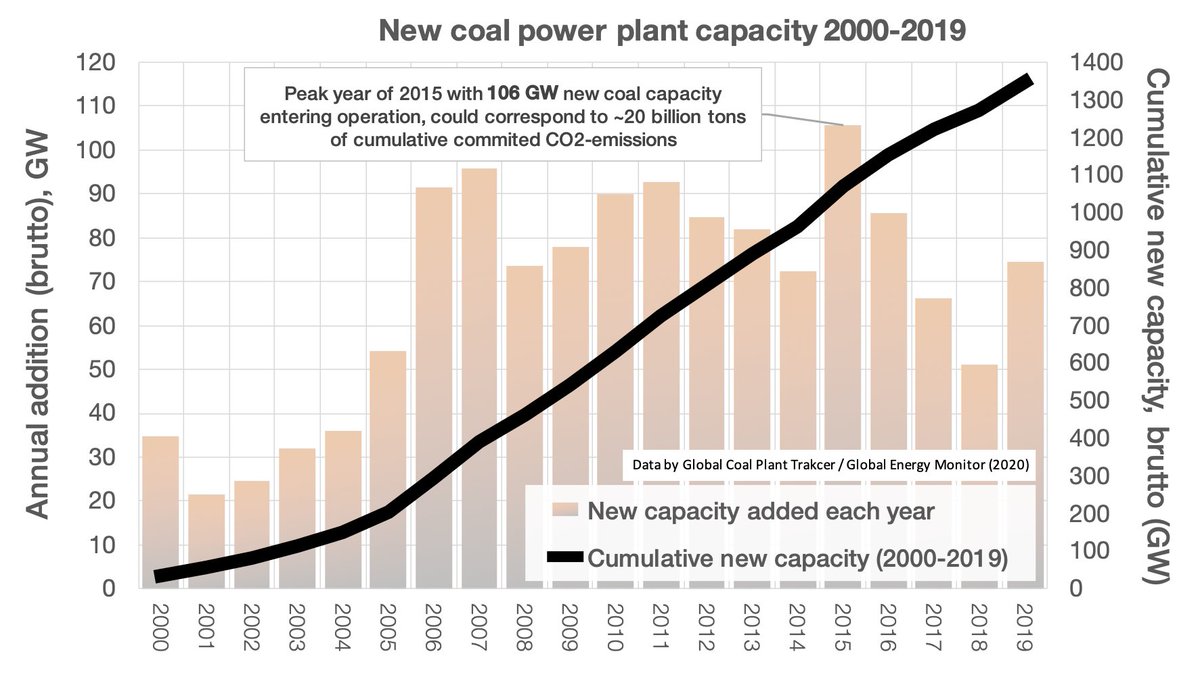
[3/x] Capacity-averaged age of all coal power in operation today is ~18 years. Committed emissions from existing and under-construction coal power is ~300 GTCO2-eq (294 is our central estimate, IEA say ~328). Each new 1 GW-plant commits to ~0.2 GT additionally. 
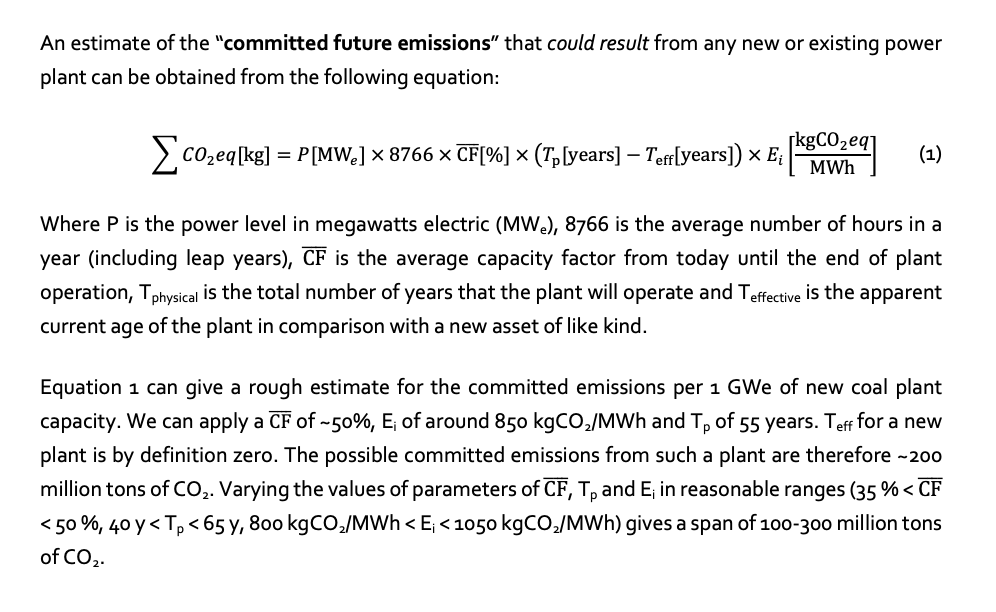
[4/x] We define the term RETROFIT DECARBONIZATION to include _anything_ done to keep existing some coal plant equipment in operation (>5 % of org. plant capex), approx. maintaining its function (>50 % of org. annual generation) while eliminating emissions (<50 gCO2-eq/kWh). 
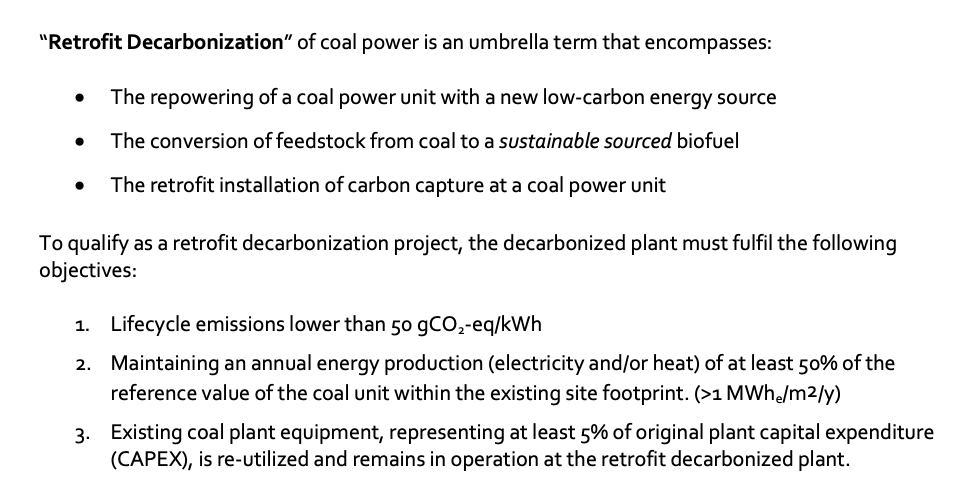
[5/x] Many retrofit options were assessed (some shown here). Emissions reqs. put tough pressure on biomass & CCS. Putting wind & solar at former coal sites is a great idea, but power dens. diff. mean they don't qualify as retrofit decarb. What really works? Geothermal & Nuclear! 

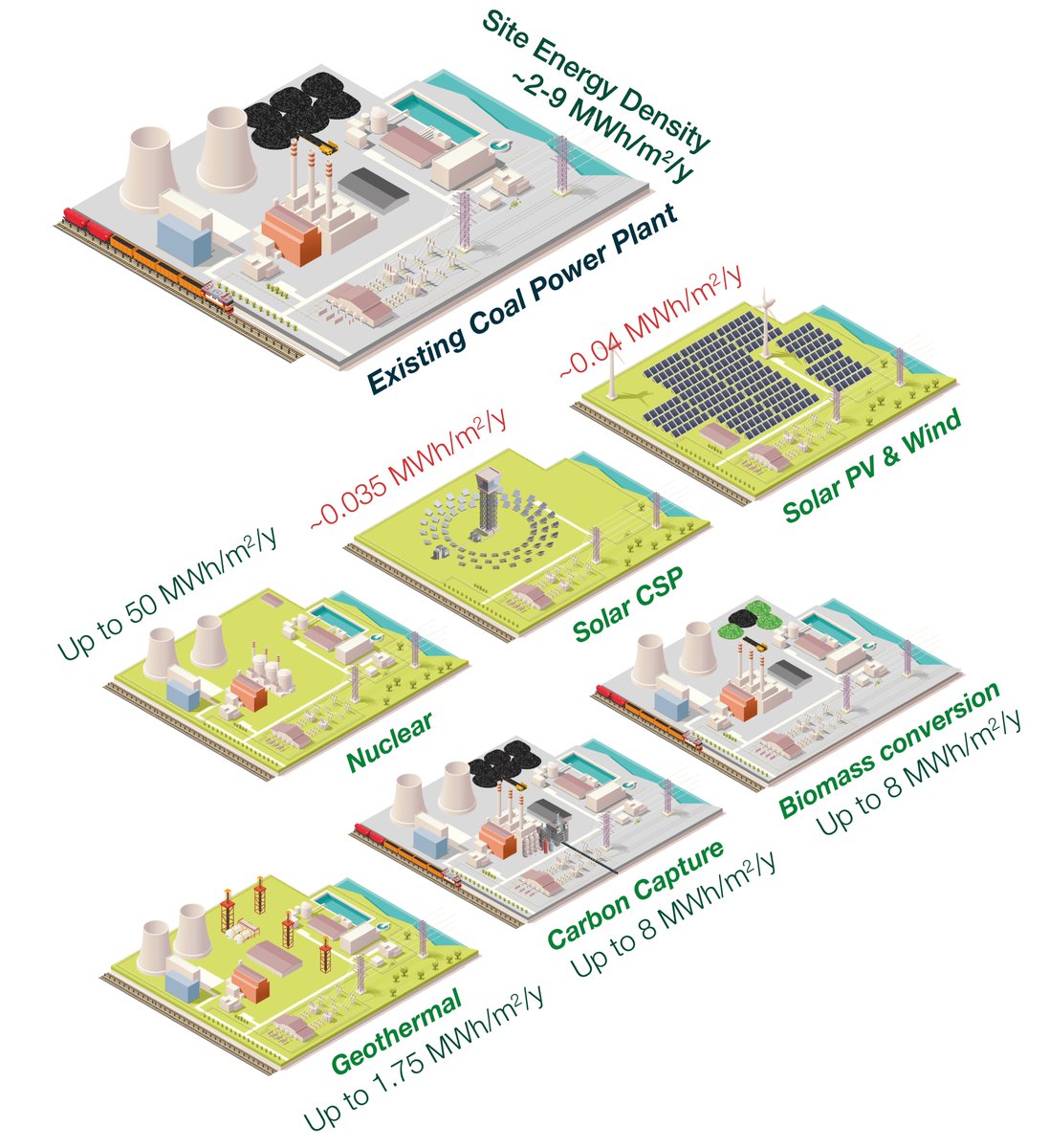
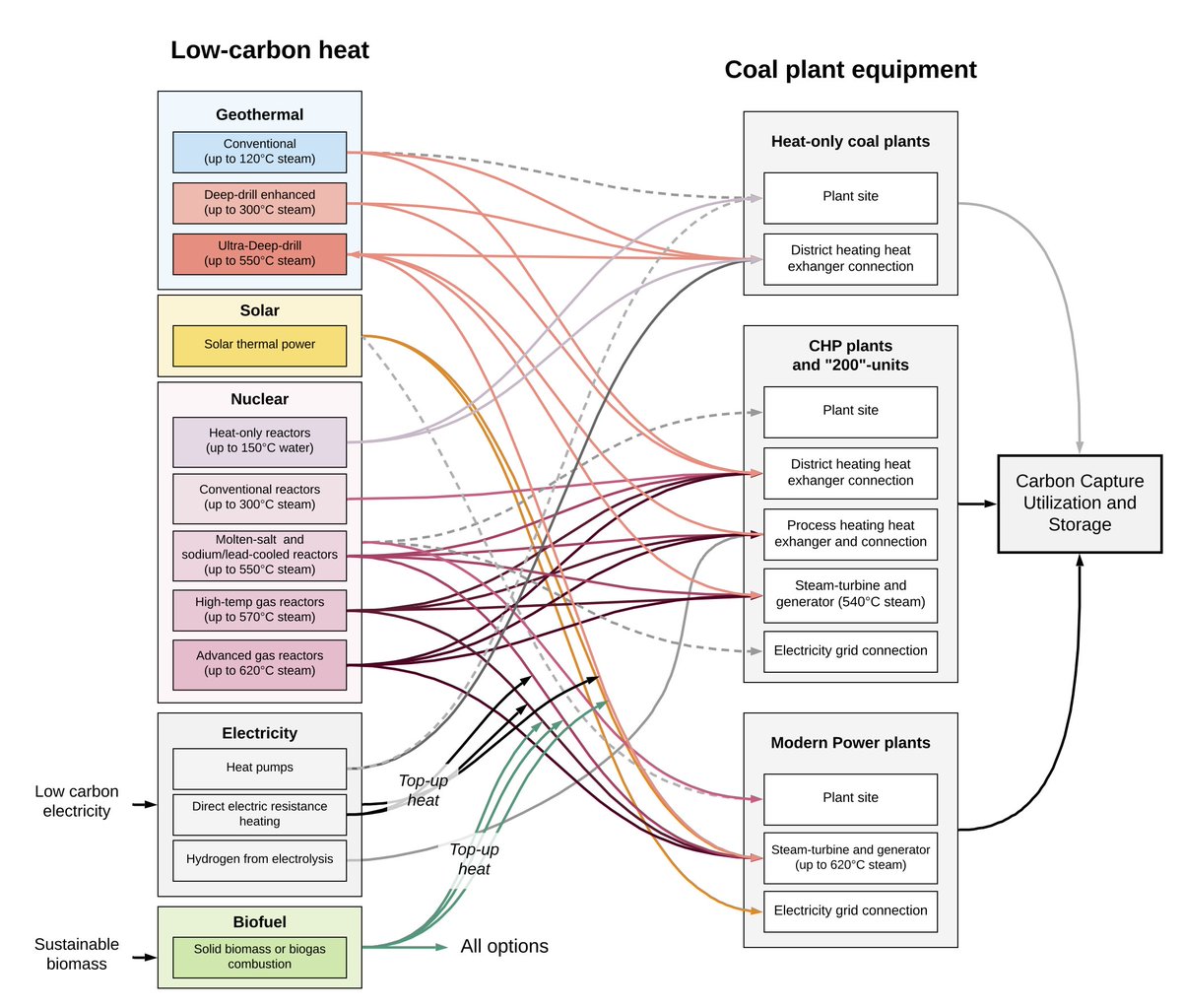
[6/x] Integration with existing equipment (and the state of that equipment!) determines savings vs. greenfield project. Re-using site + general buildings + grid can "save" up to 14-20% of org. coal CAPEX, re-using everything not related to the combustion of coal, up to 40-50 %. 



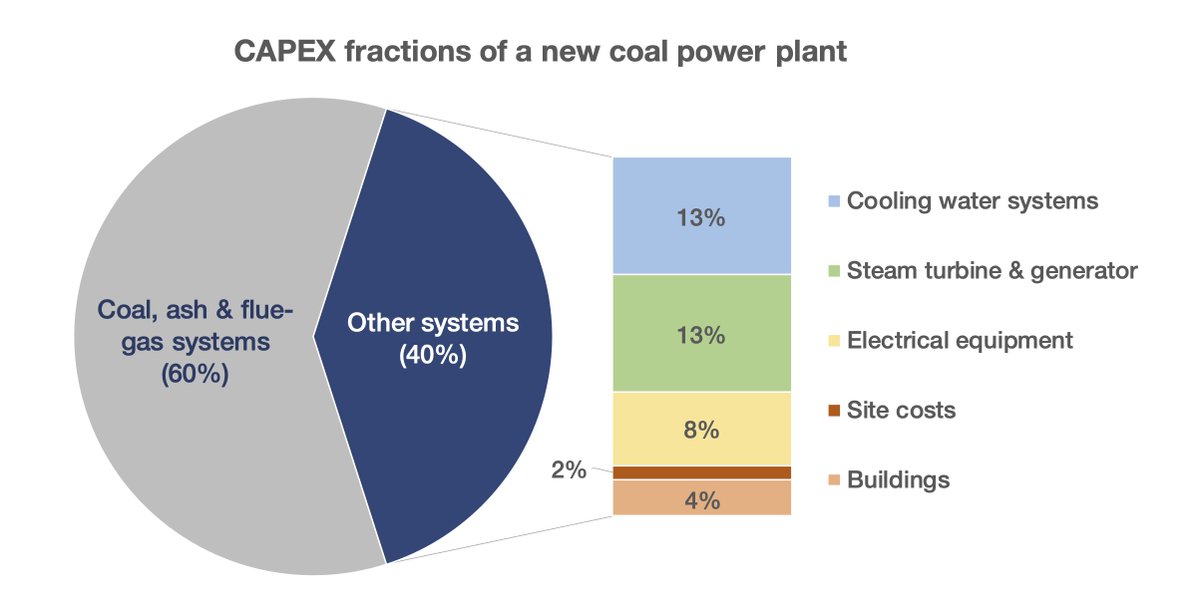
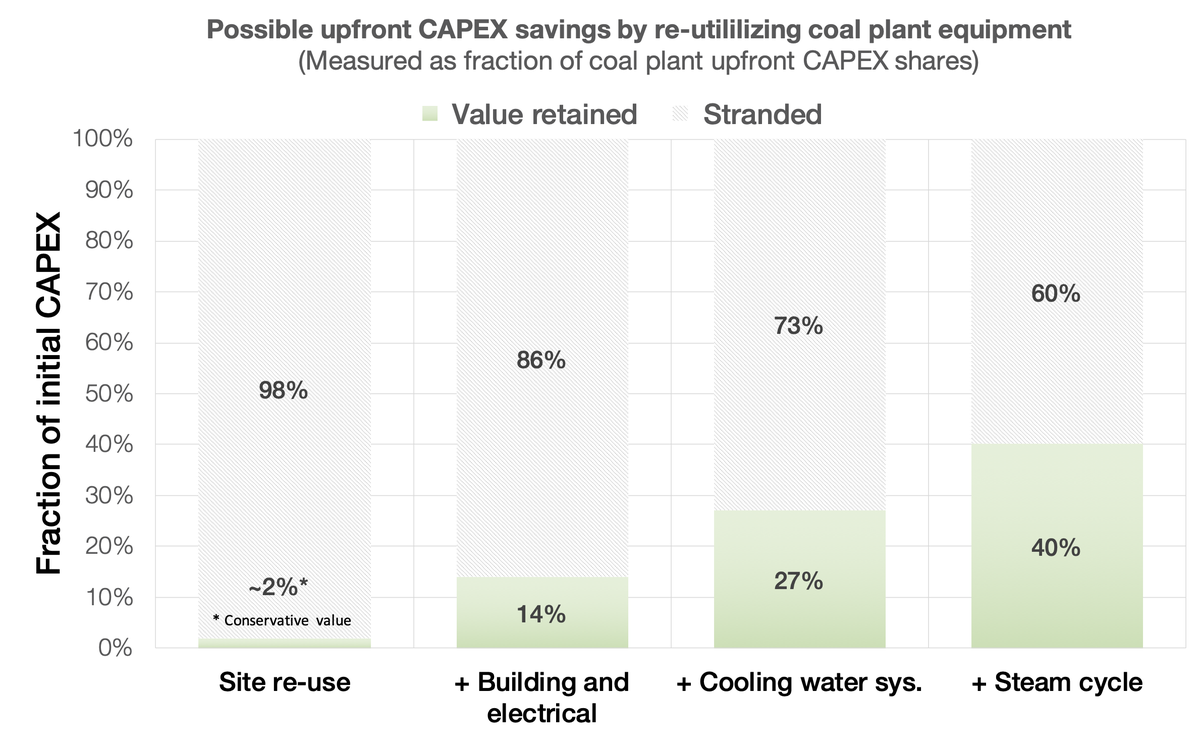
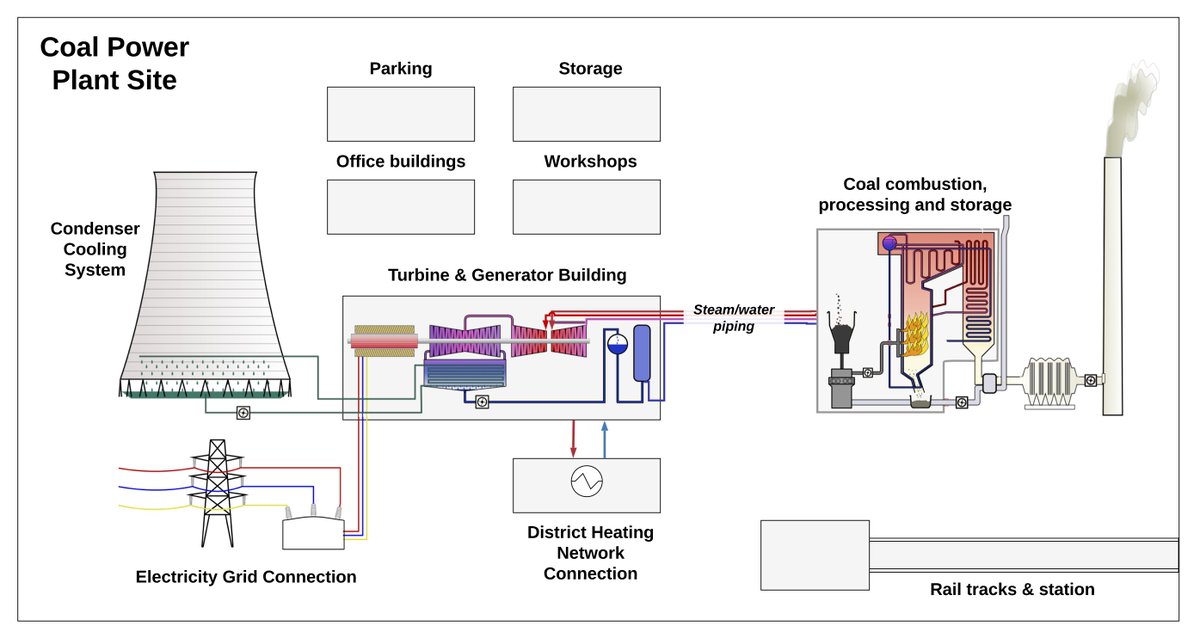
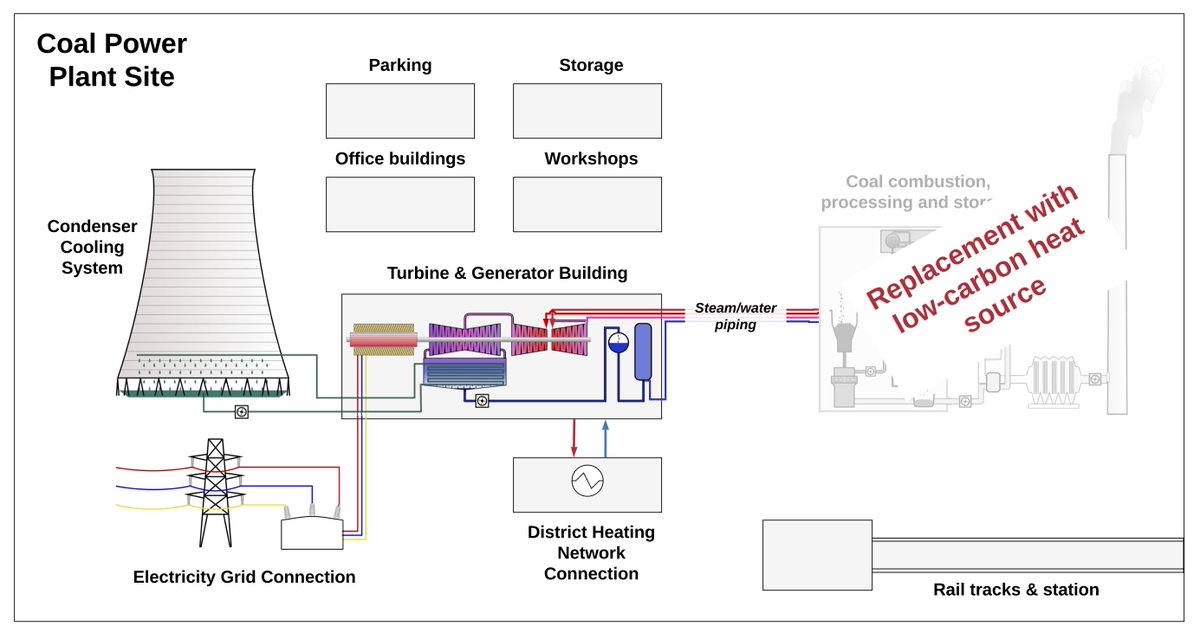
[7/x] Determining the potential of the idea requires the detailed characterization of the existing coal power plant fleet, including effective age, sites, steam conditions etc. We made a detailed survey of Poland for the case study, applying constraints for age and size. 





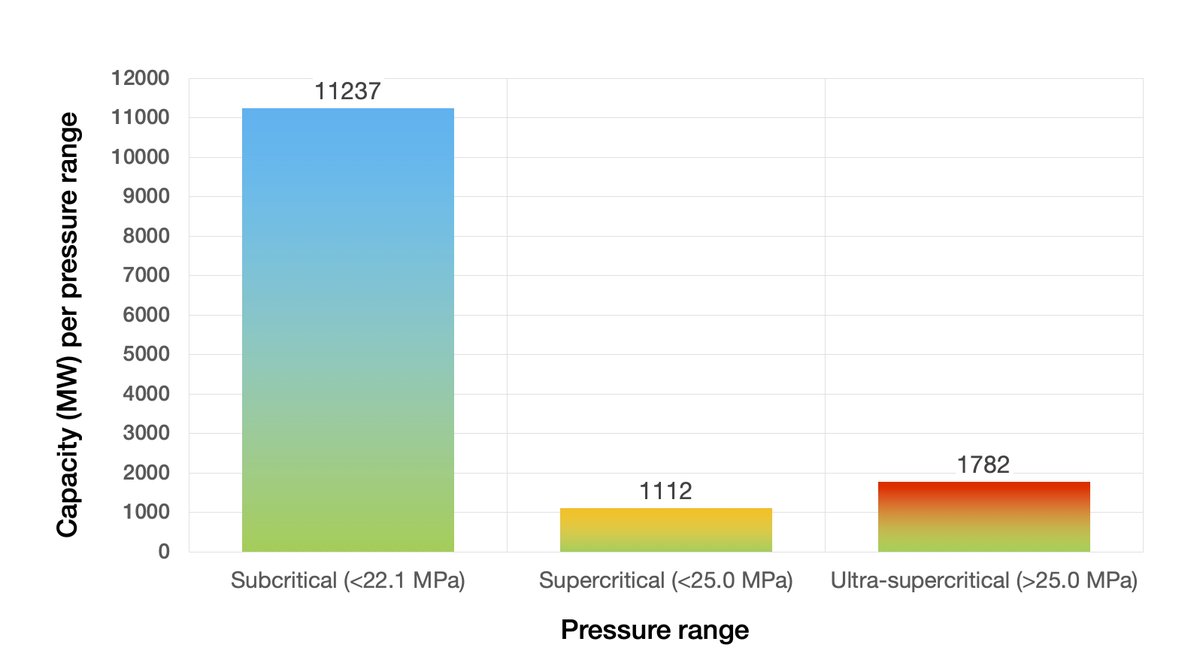
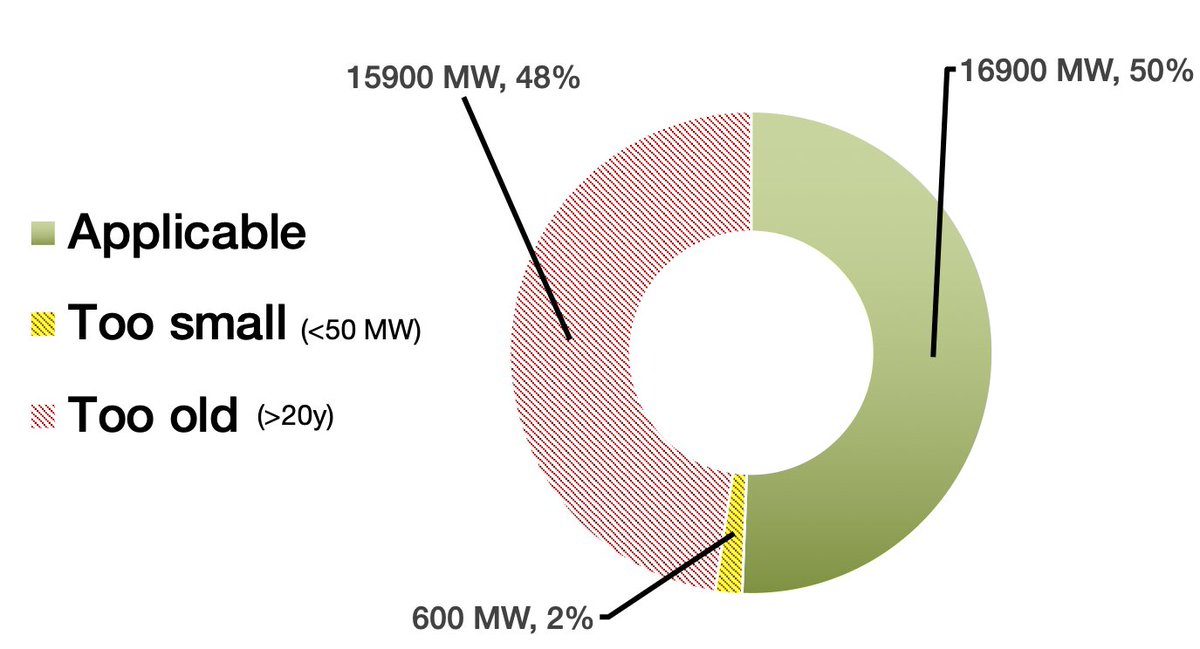
[8/x] Geothermal heat can be used to repower existing coal plant steam cycles. However, very high-temp (very deep-drill) sources need to be tapped close to existing plants. In Poland, this can conceivably become possible at the Pątnów site (580C at 15 km) in the future. 
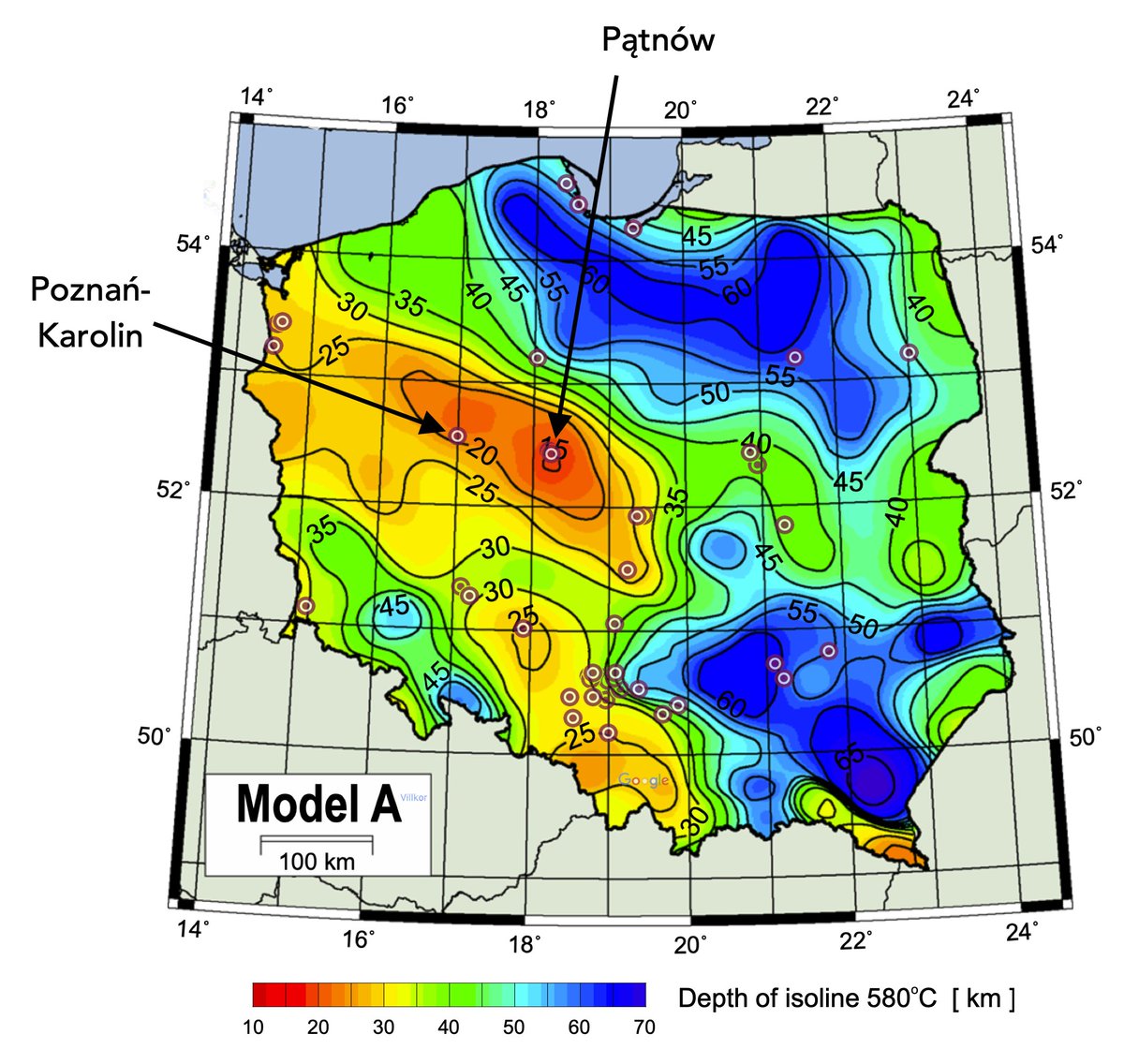
[9/x] Nuclear heat can be used to repower full coal steam cycles at any location, but direct/full integration requires advanced high temp. systems (not water cooled) with minimal EPZ (at site-boundary). More extensive turbine modifications could make LWR SMR repower possible. 

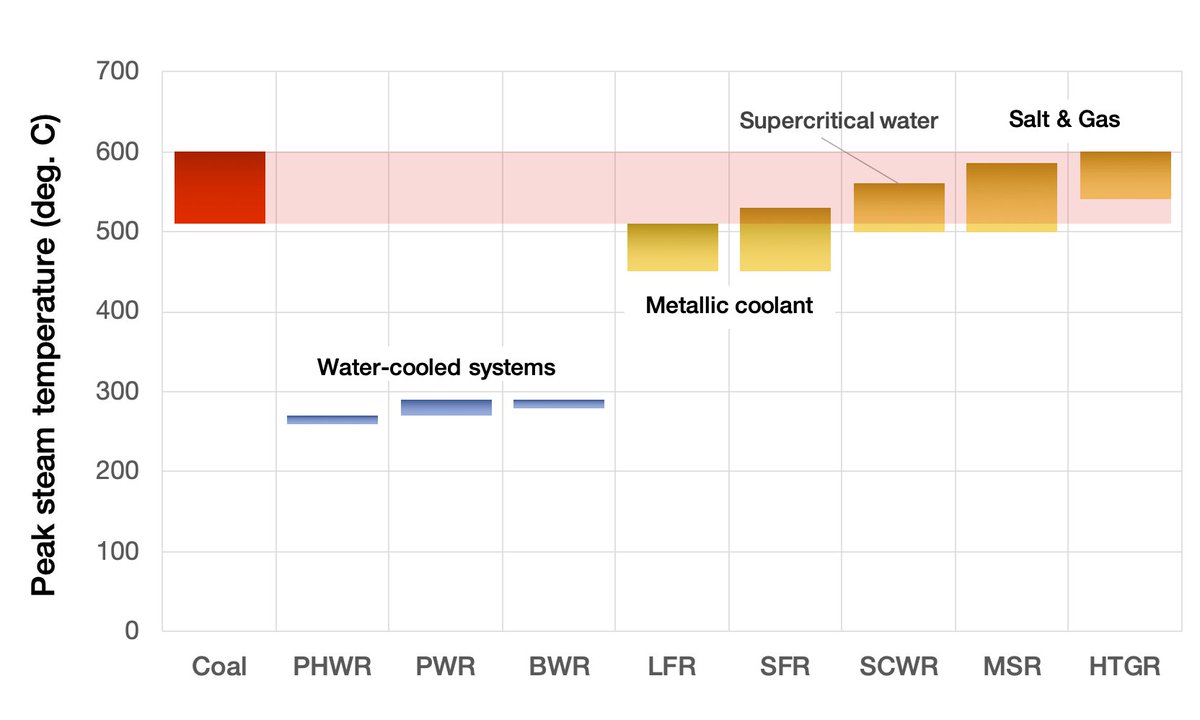
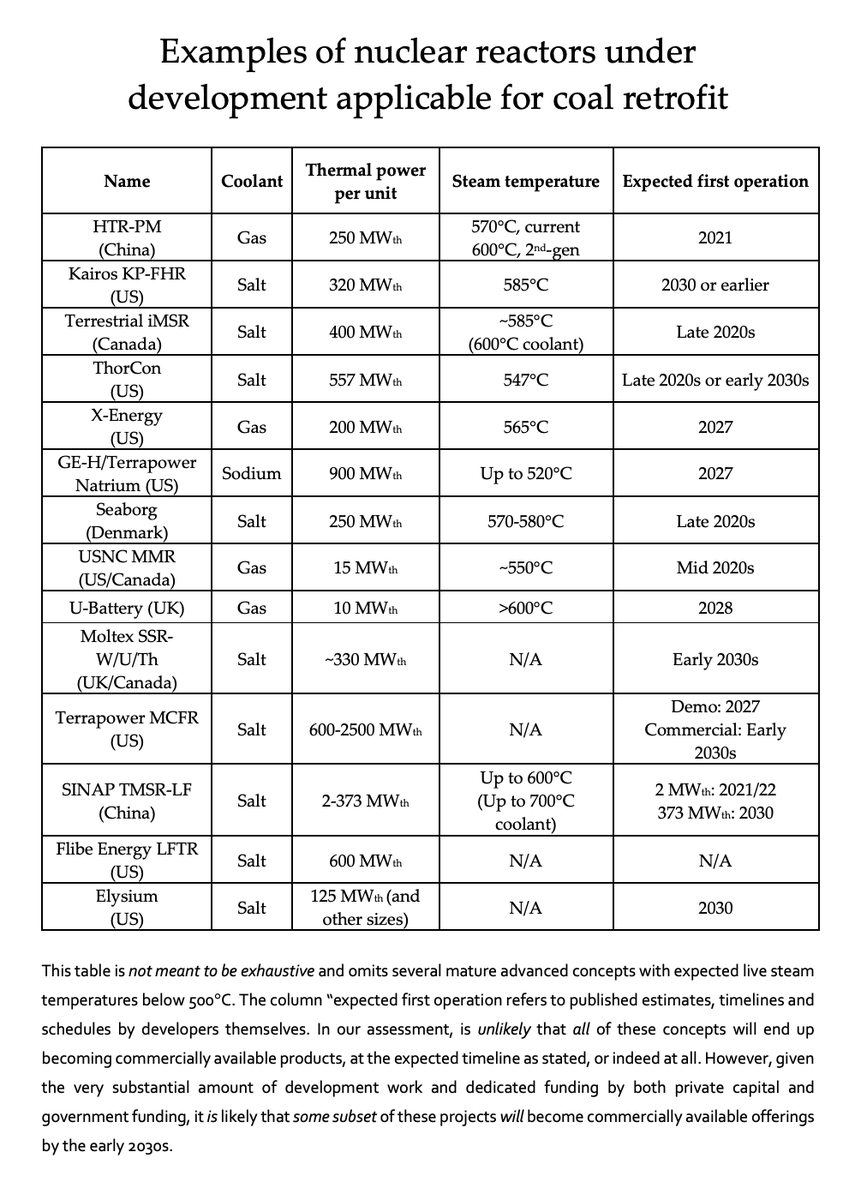
[10/x] We studied combinations of full integrations of three advanced SMRs: HTR-PM (@Tsinghua_Uni, CHNG), KP-FHR (@KairosPower) & “generic-MSR” -and three coal units. All can be done with minor modifications, saving costs vs. greenfield. Three technical papers on this coming soon 
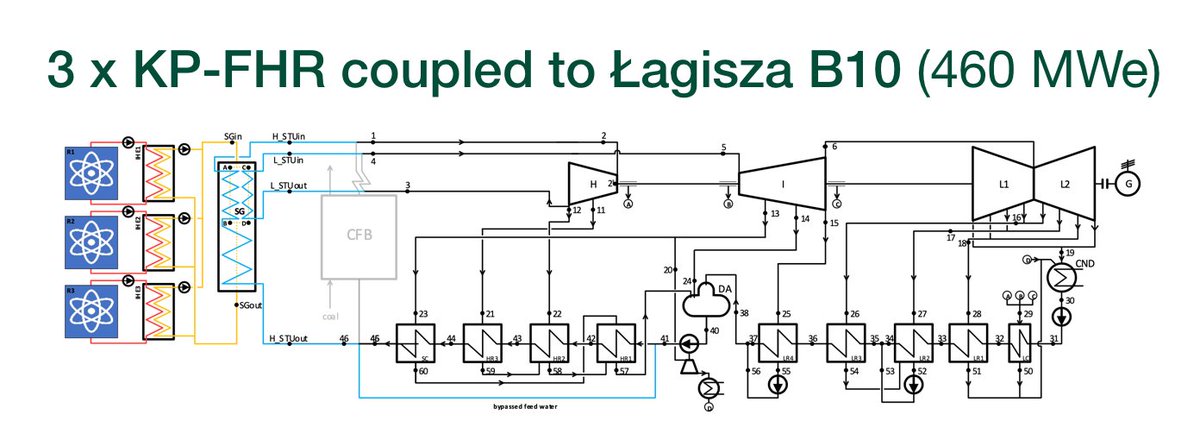
[11/x] Net cost savings in terms of avoided (deferred) upfront CAPEX is ~28-35 %, translating to a reduction of LCOE of ~9-28 % vs. greenfield. If greenfield costs are very high, retrofit costs are lower but still high. If greenfield costs are competitive, retrofit even more so! 
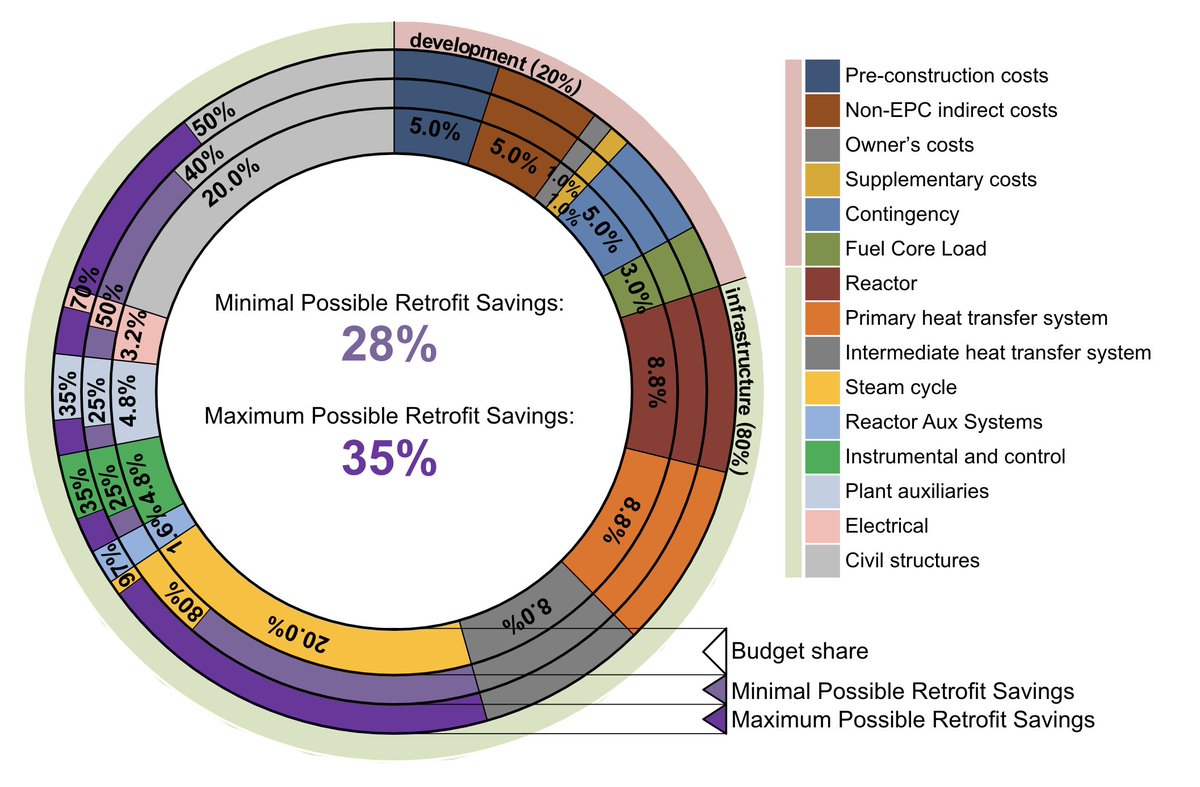
[12/x] What would the process of retrofit decarbonization look like step-by-step? Somewhat simplified illustration: 1. Decommission & clean-up coal-related equipment. 2. Establish construction site & build 3. Live happily firm-low-carbon ever after :) 


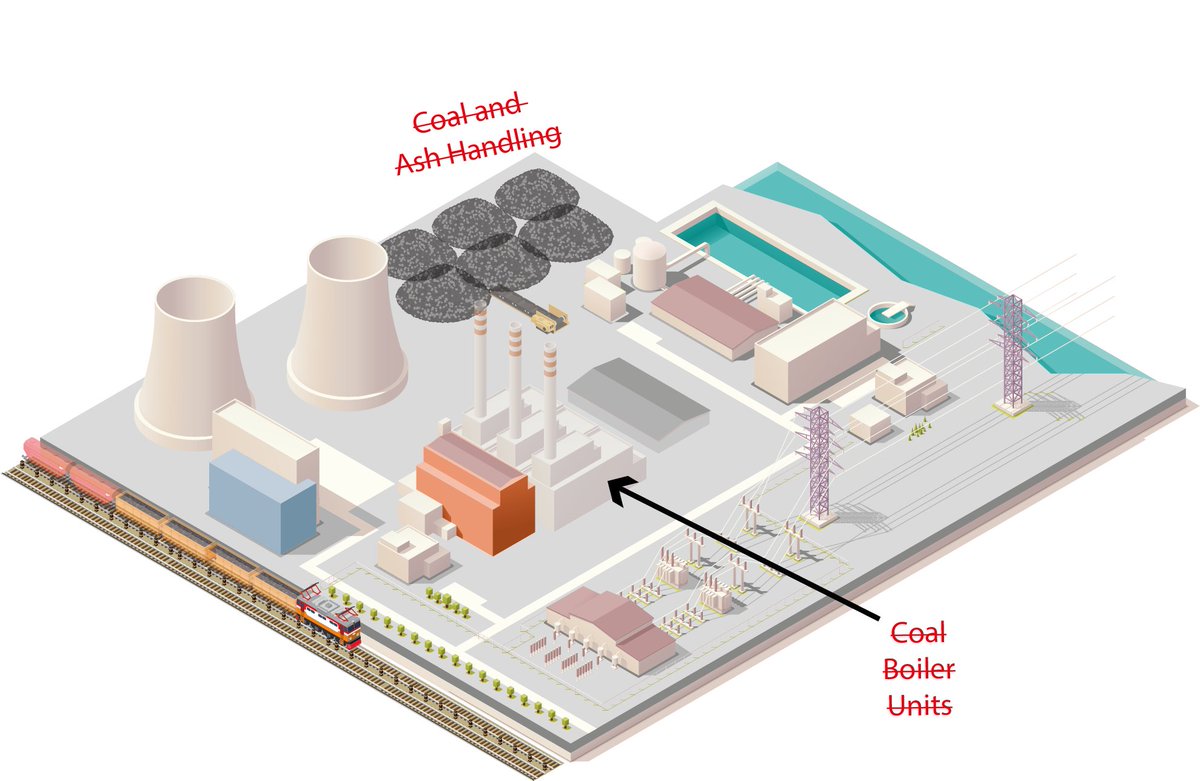
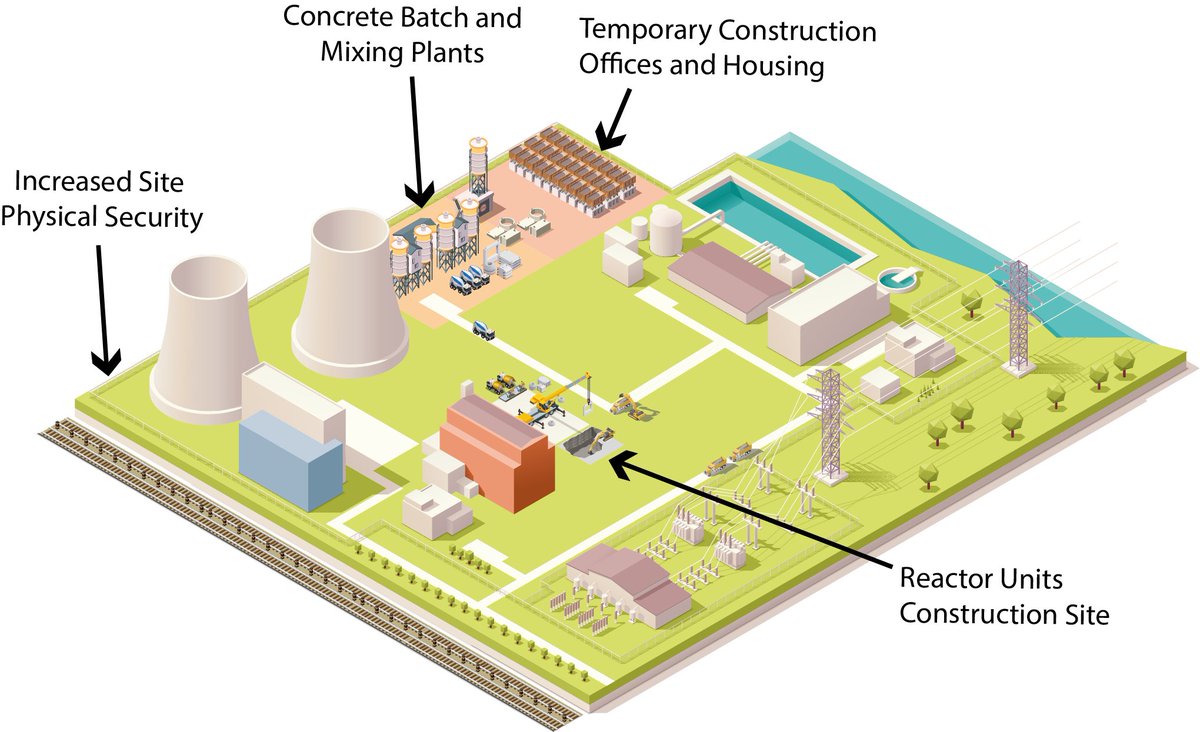
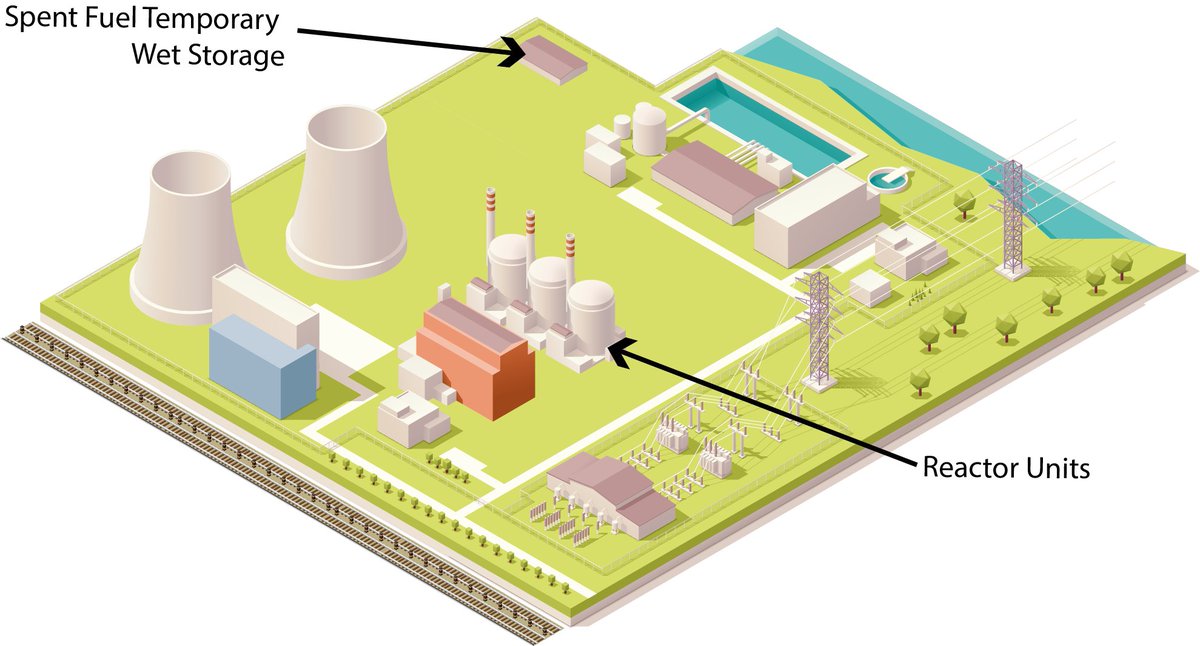
[13/x] We looked in detail particularly on whether the required construction sites could be established, and how site layouts would work with retrofit. Some examples layouts for SMR here (Łagisza, Połaniec, Kozienice, Chorzów), even more detailed work on this to follow. 



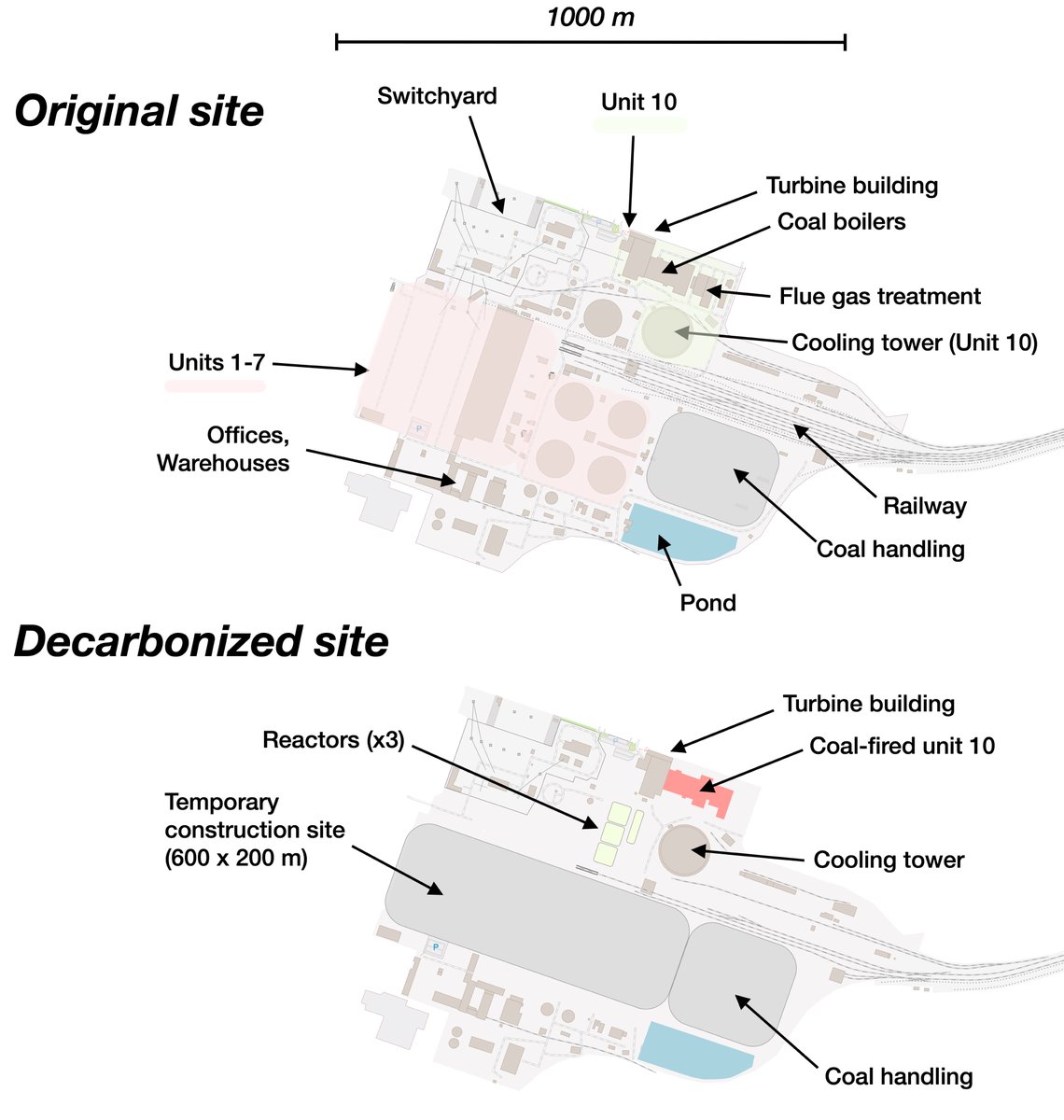
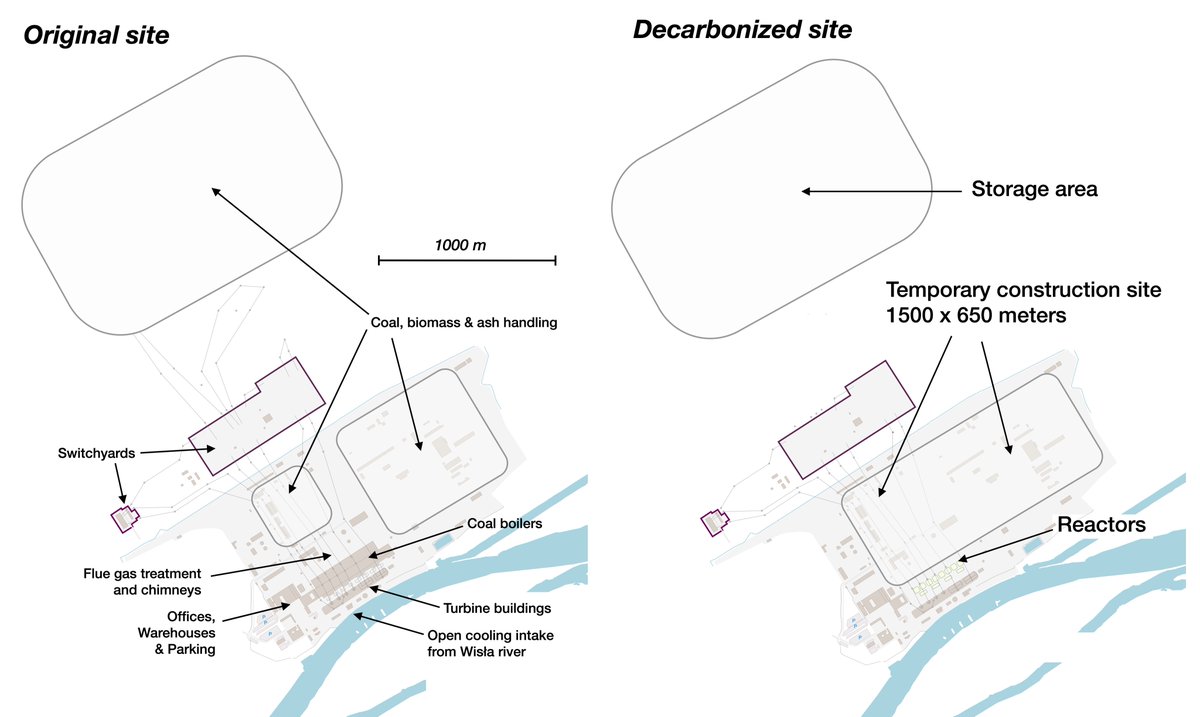
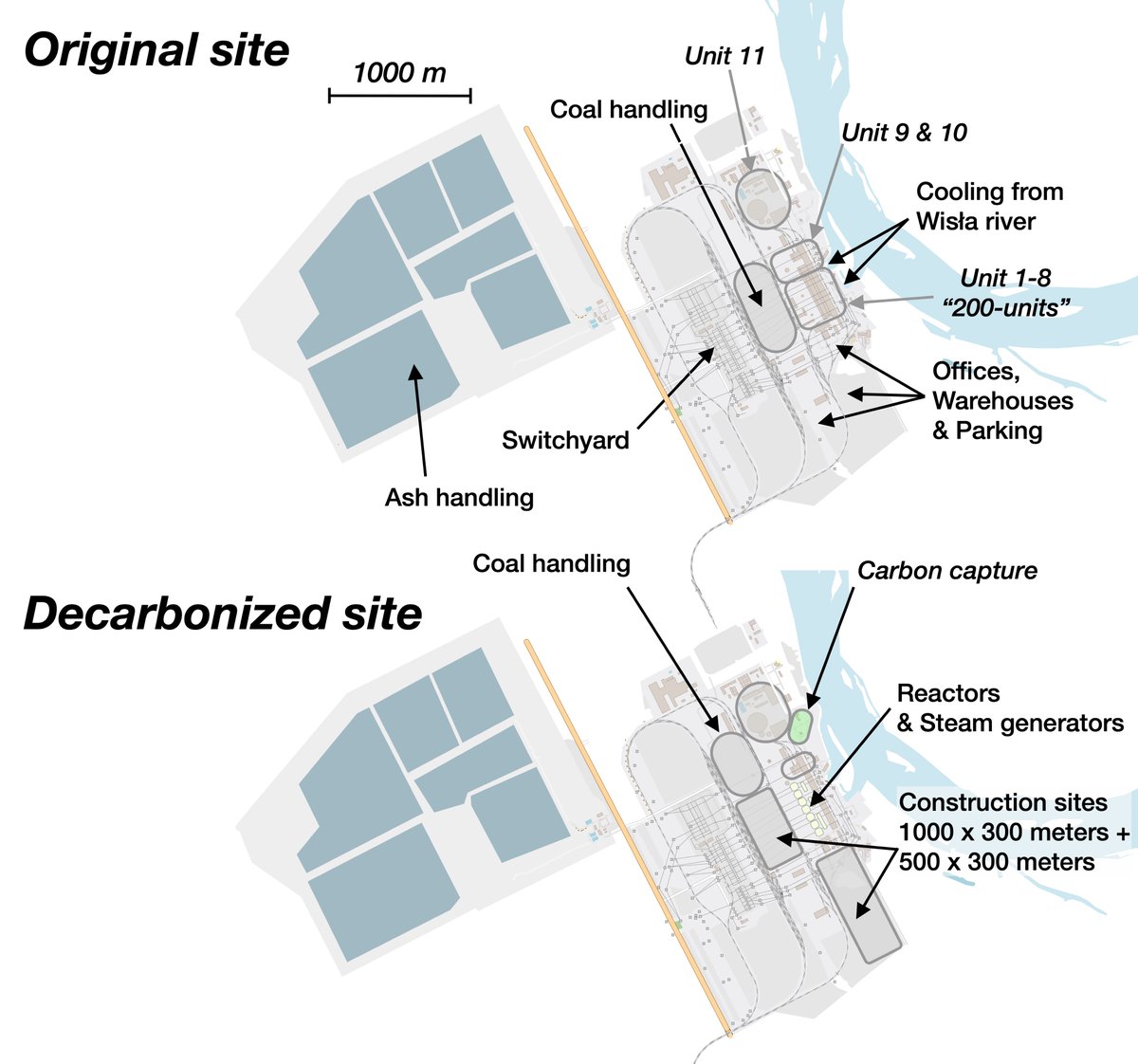
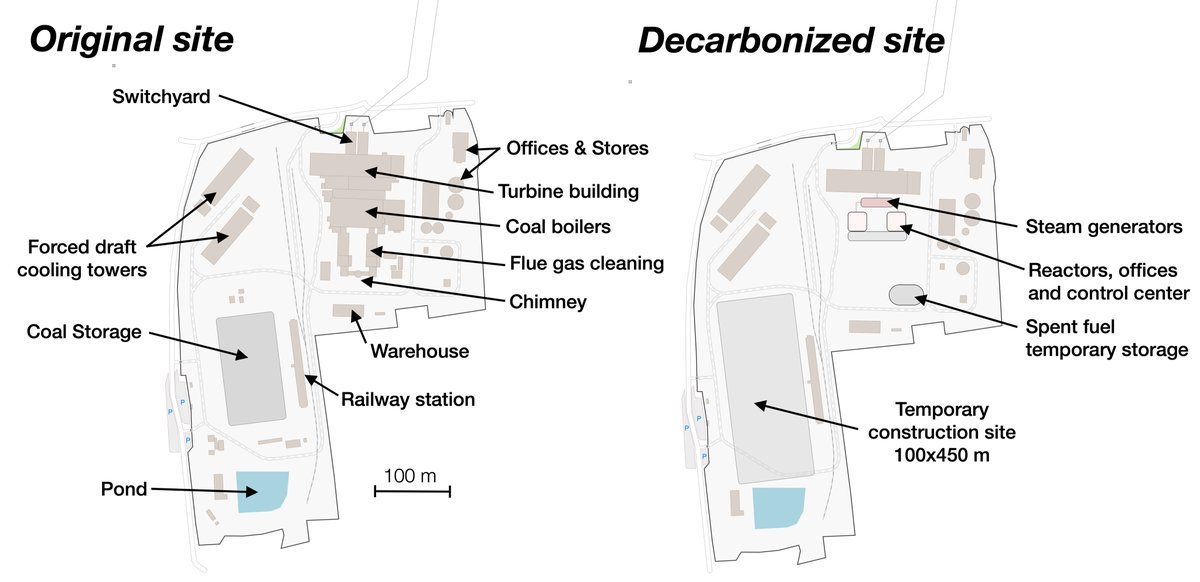
[14/x] “Decarbonisation is about two things: Building stuff and closing stuff” (Quote Prof. @emilygrubert). Coal power retrofit is an idea that could do both in one fell swoop! It CAN also make the firm power component of a decarbonized power system cheaper and quicker to build. 

[15/x] VERY exciting new round of work beginning now! Includes: studying modifications to accept lower grade steam (opening up for lower temp geothermal and LWR SMRs), detailed case studies across China, implementation study for Polish industrial co-gen and much more!
[16/x] Thanks to @PawelGladysz, @BartelaUkasz & A. Sowiżdżał for great work! Thanks @EnvDefenseEuro & Rodel Foundation! Thanks to Quadrature Climate Foundation for supporting the next phase (w. @cleanaircatf). Questions or want to contribute? Please contact me! Happy new year!
[17/x] Finally many thanks to @bryworthington, who initiated this work!!
• • •
Missing some Tweet in this thread? You can try to
force a refresh







